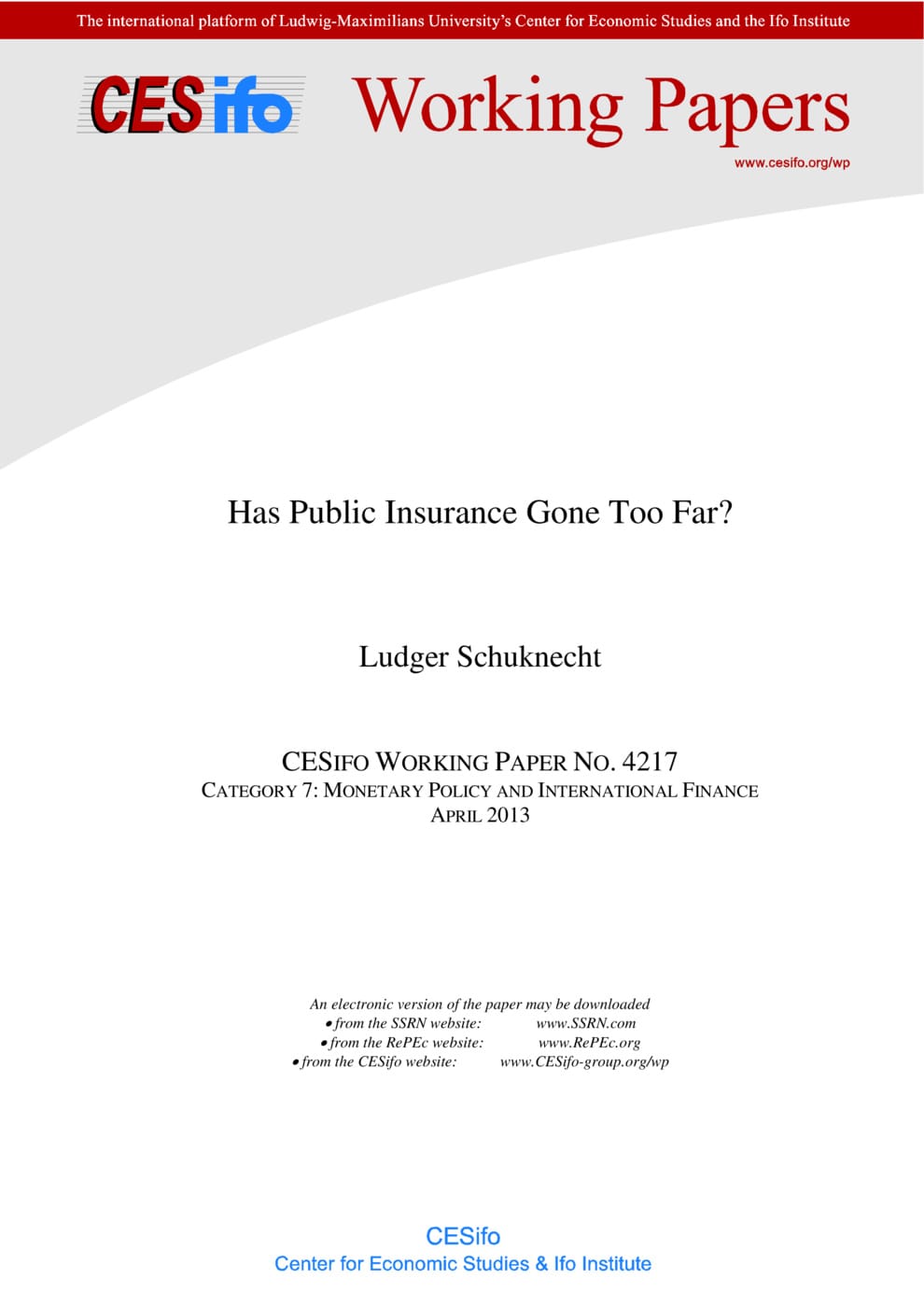Has Public Insurance Gone Too Far?
CESifo, Munich, 2013
CESifo Working Paper No. 4217

This study argues that insurance is a much more pervasive motive of government activity than is commonly thought; one associated with great benefits but also great risks. From the start of public social insurance in the late 19th century, social insurance has come a long way to “all-inclusive” modern welfare states that absorb, on average, 25% of GDP in industrialised countries. Moreover, governments today are expected to “insure” aggregate demand via public spending and jobs, and economic sectors – most notably the financial industry – via subsidies and bailouts. Public insurance has also spread across borders via international support programmes. All this has not only boosted government debt to historic peace-time highs, but also led to significant potential future government liabilities via social security systems and possible further national and international financial support programmes. While the distributional implications are ambivalent, the compound effects have put the sustainability of public finances and macroeconomic stability at risk in many countries. Correcting over-commitments requires ambitious and timely policy action.
Monetary Policy and International Finance
Fiscal Policy, Macroeconomics and Growth